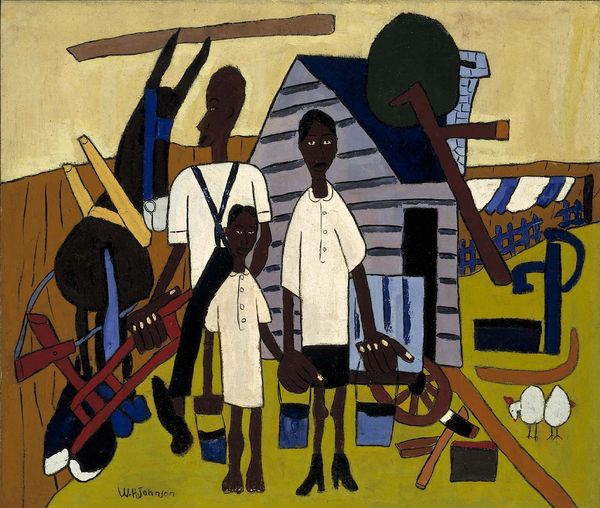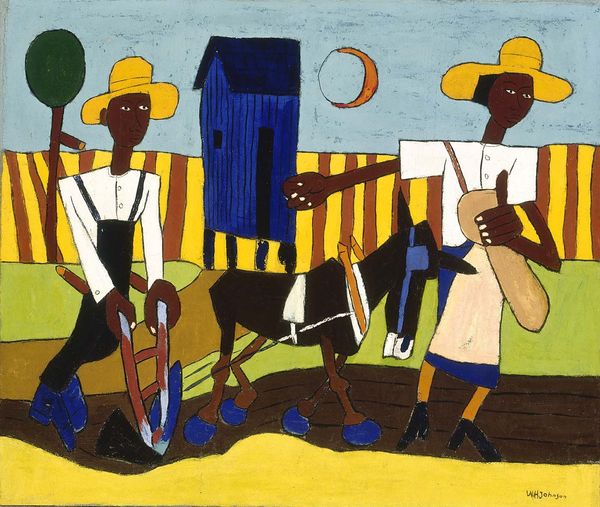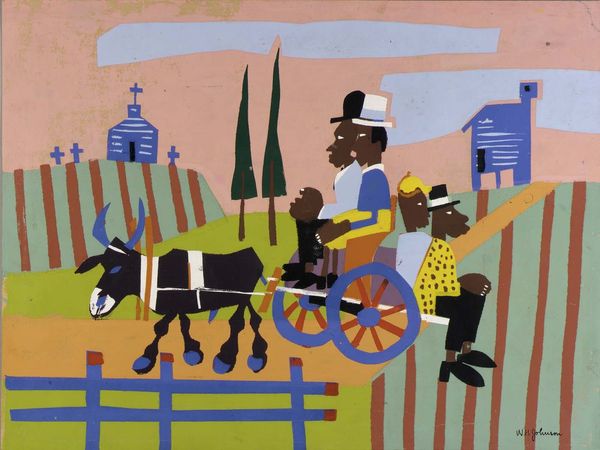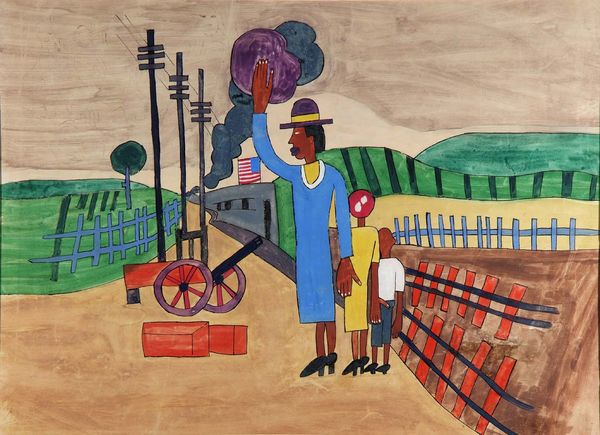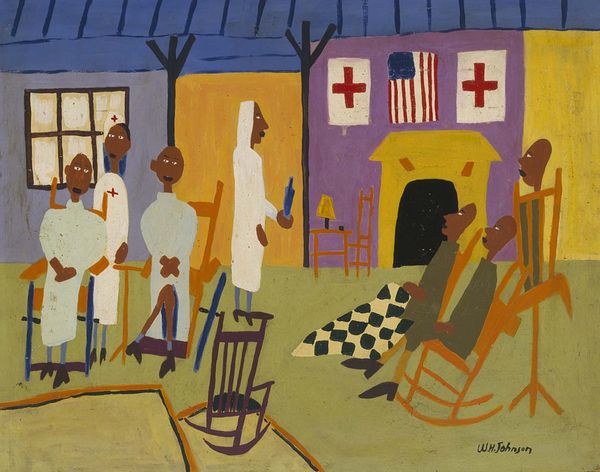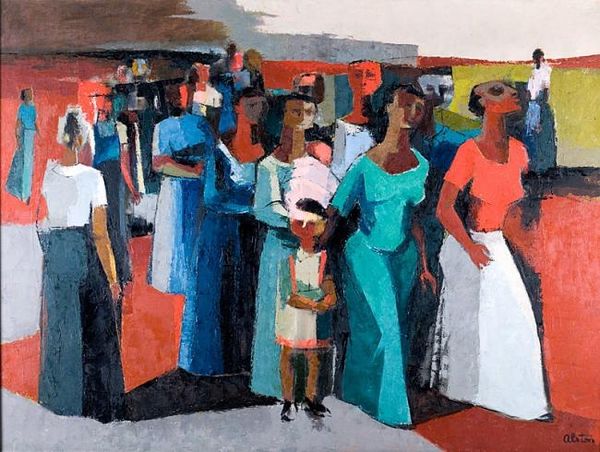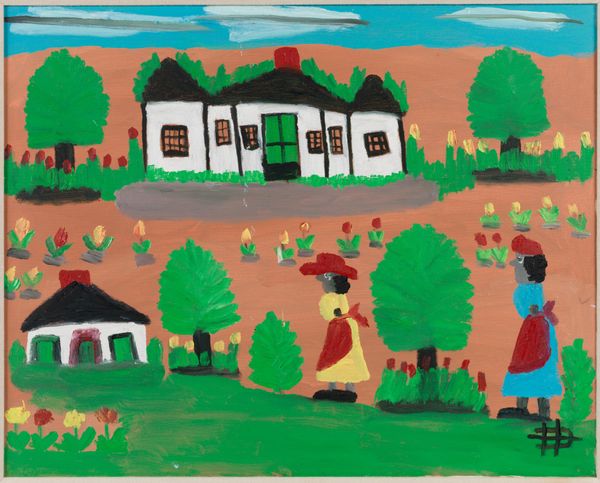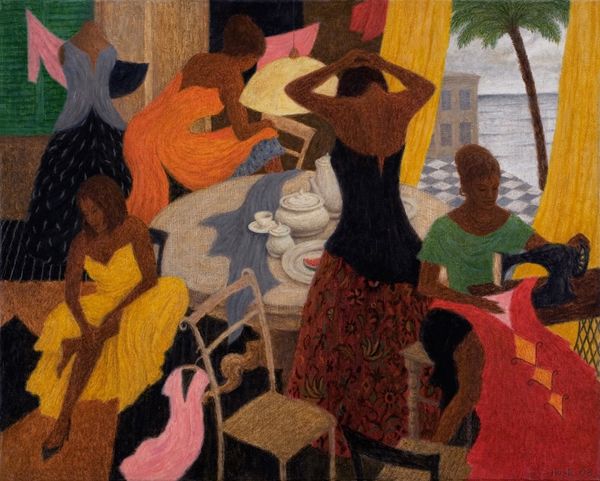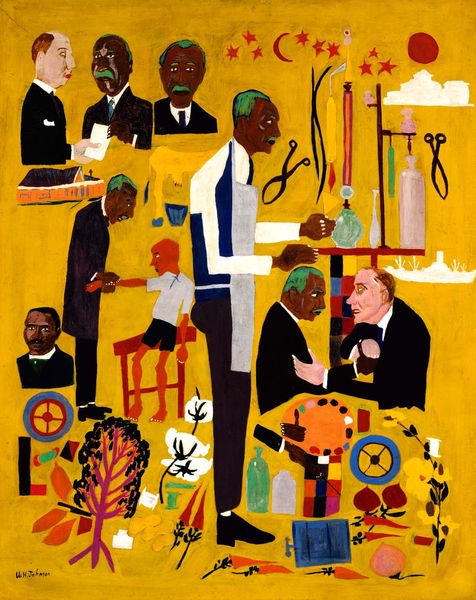
tempera, painting, acrylic-paint
#
portrait
#
narrative-art
#
tempera
#
painting
#
landscape
#
harlem-renaissance
#
acrylic-paint
#
figuration
#
social-realism
#
naive art
Copyright: William H. Johnson,Fair Use
Editor: "Off to War," painted by William H. Johnson in 1942 using tempera and casein. It has a folk-art quality that is very charming and optimistic, while depicting a somber theme: a soldier saying goodbye to his family. What draws your eye when you look at it? Curator: The image resonates powerfully within its historical context. It's 1942; America has just entered World War II. Looking at Johnson's composition, what strikes me is how he frames a very intimate, domestic scene of farewell against the backdrop of this massive global conflict. The simplified forms, what some might call 'naive,' speak volumes. The artist is making sophisticated choices about representation and whose stories get told. Does the style flatten the emotional impact, or intensify it? Editor: That's an interesting way to look at it! I thought it looked rather upbeat, but maybe the bright colors and simplified figures belie the emotional depth of the scene? I now also see the narrative and social commentary... How do you interpret his choice to paint in this "naive" style? Curator: It’s about reclaiming agency over representation. Consider that, for a Black artist during the Harlem Renaissance and the war era, representation in mainstream art often lacked authenticity or dignity. The stylized, almost childlike approach, sidesteps those imposed expectations, foregrounding emotional truth. By adopting a folk style, Johnson democratizes the image, making it more accessible to a broader audience and perhaps centering the experience of everyday people during wartime. What is he telling us about the politics of visibility? Editor: So, the "naive" style is less about artistic limitation and more about making a political statement! I hadn't considered how his artistic choices countered the prevailing, and often biased, representations of Black Americans at that time. It’s not just a charming snapshot, but a deliberate act of cultural resistance and historical documentation. Thank you; that shifts my perspective considerably. Curator: And hopefully makes you consider the socio-political implications of artistic choices more broadly!
Comments
No comments
Be the first to comment and join the conversation on the ultimate creative platform.

